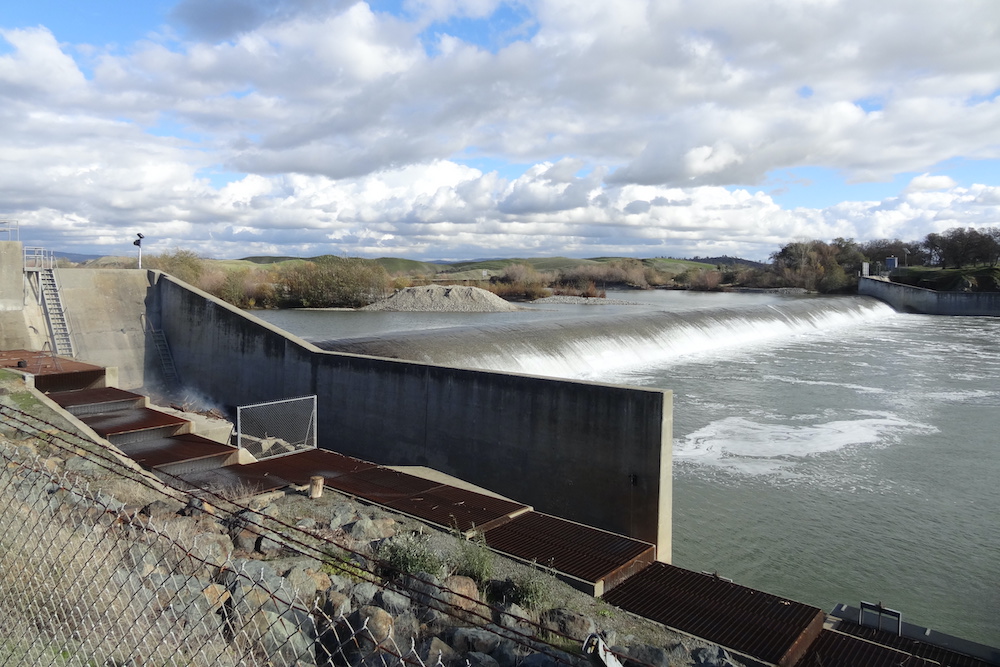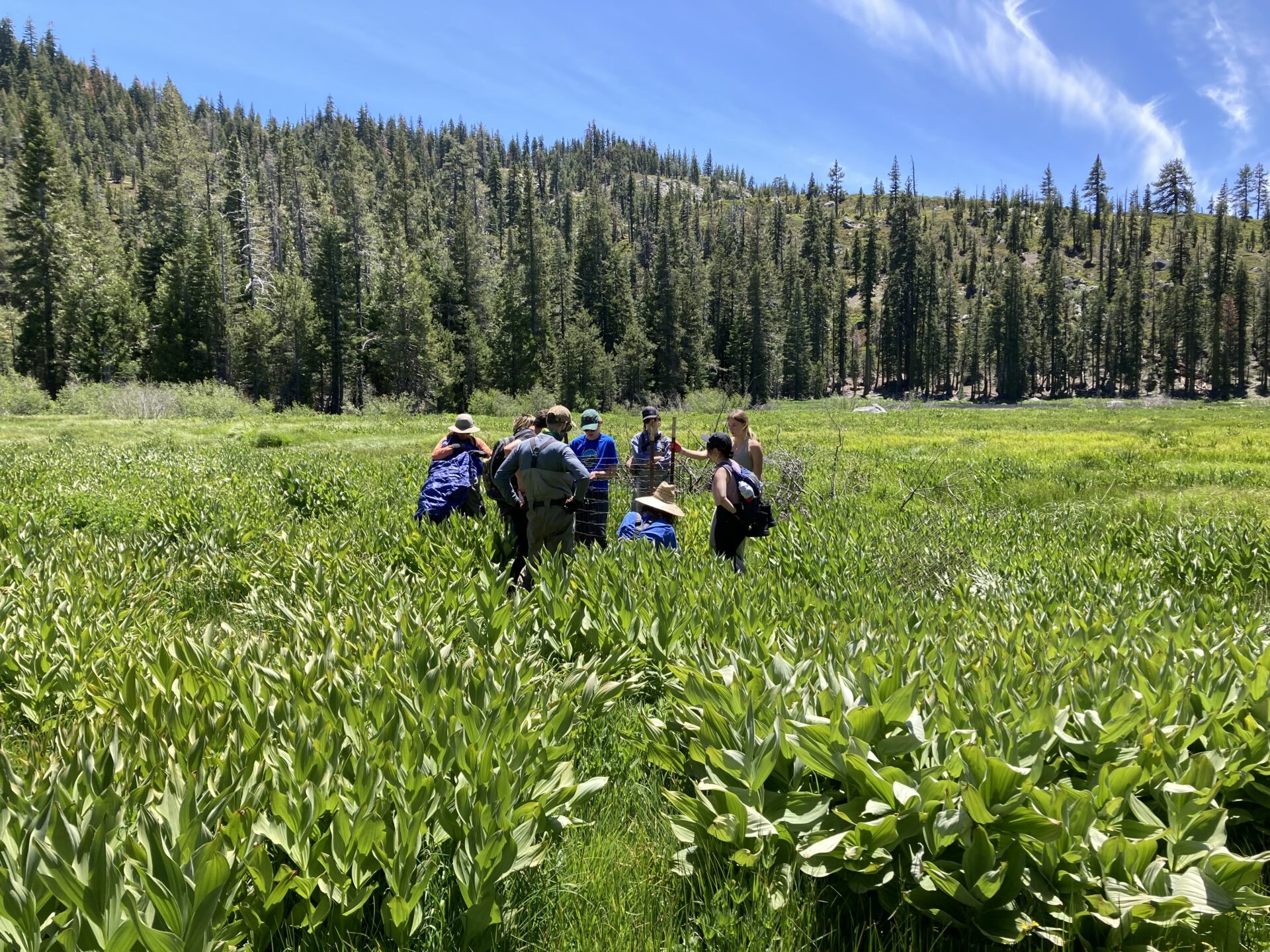Daguerre Point Dam: A History of Obstructing Salmon
SYRCL is asking the Army Corps of Engineers to help threatened salmon reach their spawning grounds by cleaning the fish ladders at Daguerre Point Dam. A meager 1% of their historic population remains, which was once robust enough to feed communities, wildlife, and the forest. Below we offer context to our request by outlining some of the history of Daguerre Point Dam.
When and Why Daguerre Point Dam was Built
Daguerre Point Dam was first built in 1906 by Wendell P. Hammon, James O’Brien, and the United States Army Corps of Engineers. It is a submerged dam located at Daguerre Point on the lower Yuba River, approximately 10 miles east of Marysville, CA and is owned by the U.S. Army Corps of Engineers. The dam is 24 feet high and holds back about 880,000 cubic yards of rock debris, according to localwiki. The dam was constructed with the intent to prevent debris from hydraulic mining from washing into the Feather River and Sacramento River and was not meant to obstruct the flow of water.
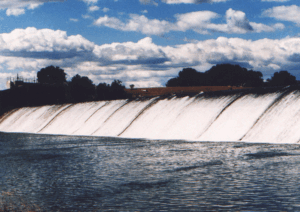
In the mid-1800s, hydraulic mining created large quantities of sediment in the Yuba River. Between 1849 and 1909, around 600 million cubic yards of material was unearthed by hydraulic mining and entered the river. This, and other dams like Englebright, were meant to hold this sediment from traveling farther downstream.
In 1898, efforts to control the accumulation of sediment were initiated by a project known as the “1898 Project”. In 1901, the California Debris Commission approved a plan to install four barrier dams; this plan was then authorized under the Rivers and Harbors Act of 1902. Following approval from Congress, the construction of Daguerre Point Dam began in the first half of the 20th century and was led by the California Debris Commission.
This dam created a barrier for fish from accessing habitat upstream—an especially harmful barrier for anadromous species (meaning that they migrate up rivers from the sea to spawn) like salmon, steelhead, and sturgeon. In 1937, the dam was equipped with two fish ladders to help fish swim up and over it. While intended to allow fish access to the river above the dam, certain conditions can make it difficult for many of the fish that populate the area to effectively navigate the dam’s fish ladders, including the accumulation of debris that can block access and the need to maintain attraction flows during spawning season.
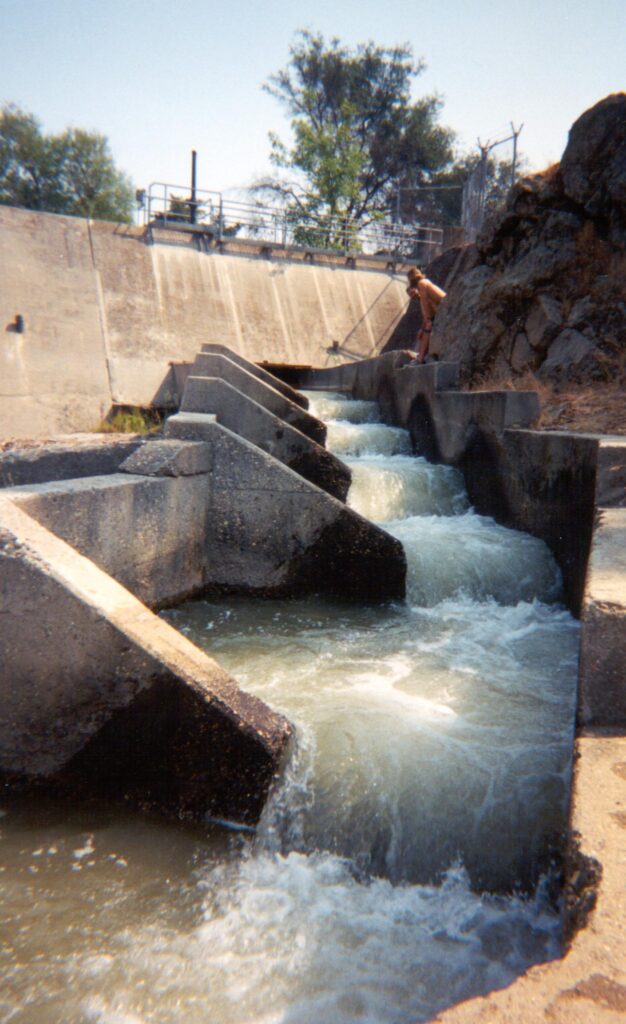
Following the decommissioning of the California Debris Commission, the US Army Corps of Engineers was given the responsibility of managing Daguerre Point Dam and the fish ladders. The Army Corps oversees the maintenance of the dam to ensure it continues to operate properly and in accordance with its Congressionally approved purpose. The Army Corps must also ensure that the care and operation of the dam and ladders does not jeopardize any fish species that have been listed as threatened by federal resource agencies.
Impacts on Threatened Fish
In more recent years, the operation and maintenance of Daguerre Point Dam has been the subject of some controversy. In February 2012, the National Marine Fisheries Service (NMFS) released a formal decision finding that the operation of the dam is likely to jeopardize the survival of three species of endangered fish – spring-run Chinook salmon, steelhead, and green sturgeon.
The decision, known as a biological opinion, was issued as a result of a lawsuit files in 2006 by the South Yuba River Citizens League and Friends of the River. The biological opinion found that the Corps’ Daguerre Point Dam has contributed to population declines for the three species, due mainly to the fact that the dams block the fish from migrating upstream to suitable spawning habitat. By forcing the fish to spawn in degraded and insufficient spawning habitat, salmon suffer from competition for scarce spawning space, disruption of gravel spawning nests, and interbreeding with hatchery strays and other runs. Additionally, Daguerre Point Dam is a complete barrier to the upstream migration of green sturgeon, even with the fish ladders, as they cannot get up the ladders.
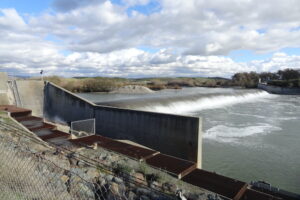
Based on these and other findings, NMFS concluded that the Army Corps of Engineers had to take a number of actions to reduce the harm being caused to the threatened species. Most importantly, the biological opinion required the Corps to implement a program to provide fish passage past the dams by 2020.
Attempts at Hydropower
In July of 2012, Archon Energy Ltd., a privately owned Canadian energy company, filed an application to build a 3-megawatt hydroelectric facility directly adjacent to the dam. In their application to the Federal Energy Regulatory Commission (FERC), Archon Energy argued that the ‘fish friendly’ screw turbines of the facility would have no impact to the sensitive salmon resources of the lower Yuba River despite never having been tested in rivers of the United States with salmon.

Following the issuance of Archon Energy’s permit in 2013, SYRCL organized public opposition where many spoke to voice their concern that legitimizing an antiquated dam would put additional strain on already threatened salmon and steelhead populations. In 2015, after Archon Energy failed to file a six-month progress report, FERC issued an order to cancel the permit, effectively killing any threat this project posed to the Yuba River.
A Persistent Threat
But even without the threat of a hydropower project, Daguerre Point Dam still has its share of problems as an archaic dam built in 1910 with inadequate fish passage facilities. The Army Corps of Engineers has been criticized (and even sued) many times over the years for failing to comply with the Endangered Species Act requirements and protect the Chinook salmon, steelhead, and green sturgeon that call the Yuba River home. According to these arguments, the Daguerre Point Dam fish ladders do not meet standards established by fisheries agencies to reduce impacts on migrating fish.

Less than 3,000 Chinook salmon return to the lower Yuba River annually, which is a 99.5% decrease from the historic population size. The poorly maintained fish ladders at Daguerre Point Dam limit their ability to access what little remains of their spawning habitat. These fish ladders are supposed to be maintained by the Army Corps of Engineers, but their efforts have been insufficient to provide adequate passage for over a decade.
With these long-standing issues in mind, SYRCL has issued an Action urging the Army Corps of Engineers to ‘Clean the Dam Ladders’! Make your voice heard and tell the Army Corps to prioritize cleaning the fish ladders at Daguerre Point Dam to give this imperiled species a better chance at survival.
To learn more about fish ladders, read the Clean the Dam Ladders FAQ article HERE.
Did you enjoy this post?
Get new SYRCL articles delivered to your inbox by subscribing to our ENews.

